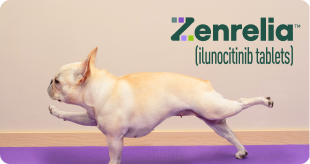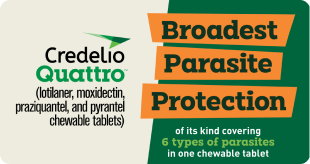Amoxicillin
Prescription required.
You already have a

subscription.
You already have a

subscription in cart.
Prescription required.
You already have a

subscription.
You already have a

subscription in cart.


What is Amoxicillin?
Amoxicillin is a broad-spectrum penicillin antibiotic used to treat various infections caused by susceptible strains of bacteria. Amoxicillin is sold per capsule or per tablet and requires a prescription from your veterinarian.
Please Note:
Amoxicillin is also available in a suspension as Amoxicillin Drops.
Suitable For:
Cats and Dogs
Benefits:
- Broad-spectrum antibiotic that treats a wide array of bacterial infections
- Treats ear infections, urinary tract infections, and skin infections (infected bite wounds)
- Also effective against upper respiratory, bladder, and dental infections
- Sold per capsule or per tablet
How does amoxicillin work?
Amoxicillin works by inhibiting the formation of bacterial cell walls.
Cautions:
Tell your veterinarian if your pet is being given another antibiotic. Also tell your veterinarian if your pet has allergies, or kidney, stomach or intestinal disease. While symptoms may subside early, use all of the prescribed medicine. IMPORTANT SAFETY INFORMATION: People and animals with known hypersensitivity to penicillin or cephalosporins should avoid exposure to AMOXI-DROP and AMOXI-TABS.
Brand Name:
Amoxil (GlaxoSmithKline), Biomox (Delmarva), Robamox-BV (Fort Dodge), Trimox (Apothecon)
Generic Name:
amoxicillin
What is the most important thing I should know about Amoxicillin?
Amoxicillin is a prescription medication available as 100 mg and 400 mg tablets, 250 mg and 500 mg capsules. Amoxicillin Drops suspension is also available in a 15 ml bottle. The usual dose of amoxicillin in dogs and cats is 5-10 mg/lb every 12-24 hours. Contact your veterinarian immediately if your pet develops severe or bloody diarrhea. Give all of the amoxicillin that is prescribed for your pet, since symptoms may begin to improve before the infection is completely treated.
What should I discuss with my veterinarian before giving amoxicillin to my pet?
Tell your veterinarian if your pet has ever had an allergic reaction to another penicillin or to a cephalosporin. Tell your veterinarian if your pet has kidney disease or stomach or intestinal disease.
How should amoxicillin be given?
Give this medication exactly as directed by your veterinarian. Amoxicillin can be given with or without food. Give all of the amoxicillin even if your pet appears to be better. Symptoms may improve before the infection is completely treated.
What are the potential side effects of amoxicillin?
Contact your veterinarian immediately if the pet experiences severe or bloody diarrhea during treatment. Stop giving amoxicillin and seek emergency veterinary medical care in the event of an allergic reaction (shortness of breath; hives; swelling of the lips, tongue, or face; rash; or fainting), seizures, unusual bleeding, or bruising. Other less serious side effects such as mild nausea, vomiting, diarrhea or abdominal pain, or yeast or fungal infection may be more likely to occur. Continue to give amoxicillin and notify your veterinarian if these symptoms occur. Talk to your veterinarian about any side effect that seems unusual or bothersome to your pet.
What happens if I miss giving a dose of amoxicillin?
Give the missed dose as soon as you remember unless it is almost time for the next regularly scheduled dose. Do not give a double dose unless otherwise directed by your veterinarian.
What happens if I overdose my pet on amoxicillin?
Seek emergency veterinary medical treatment if an overdose is suspected. Symptoms of overdose may include muscle spasms or weakness, pain or twitching, seizures, confusion, coma, or agitation.
What should I avoid while giving amoxicillin to my pet?
There are no restrictions on food or activity during treatment with amoxicillin unless otherwise directed by your veterinarian.
What other drugs will affect amoxicillin?
Before giving amoxicillin, tell your veterinarian if your pet is being given another antibiotic (for the same or a different infection), allopurinol, or probenecid. You may not be able to give amoxicillin or you may need to have the dosage adjusted. Drugs other than those listed here may also interact with amoxicillin. Talk to your veterinarian or pharmacist before giving any prescription or over-the-counter medicines, including vitamins, minerals, and herbal products.


Amoxicillin Directions:
- Amoxicillin is a broad-spectrum penicillin antibiotic available by prescription used to treat various infections caused by susceptible strains of bacteria.
- Amoxicillin can be used to treat infections such as ear infections, urinary tract infections, and skin infections. Amoxicillin may also be used for purposes other than those listed.
- Amoxicillin is available in tablet form in 100 mg and 400 mg strengths, and in capsule form in 250 mg and 500 mg strengths.
Contact your veterinarian immediately if your pet develops severe or bloody diarrhea. Give all of the amoxicillin that is prescribed for your pet. Symptoms may begin to improve before the infection is completely treated.
Amoxicillin Dosage:
| Weight | Dosage |
|---|---|
| All weights | Give 5-10 mg/lb of pet's body weight every 12-24 hours. Your veterinarian will determine the actual dose based on the type of infection being treated. |
| Weight | Dosage |
|---|---|
| All weights | Give 5-10 mg/lb of pet's body weight every 12-24 hours. Your veterinarian will determine the actual dose based on the type of infection being treated. |
| Horses | Do not use! |
|---|
Storage:
Store tablets and capsules at room temperature.


Amoxicillin Ingredients:
| Active Ingredient | Amount |
|---|---|
| Amoxicillin | 100 mg |
| Active Ingredient | Amount |
|---|---|
| Amoxicillin | 250 mg |
| Active Ingredient | Amount |
|---|---|
| Amoxicillin | 400 mg |
| Active Ingredient | Amount |
|---|---|
| Amoxicillin | 500 mg |
| Active Ingredient | Amount |
|---|---|
| Amoxicillin | 500 mg |


 Swipe
Swipe











































